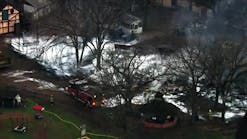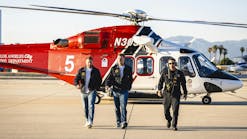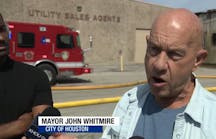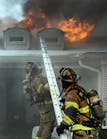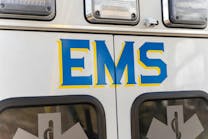How does your department define the roles of a squad or rescue company at emergency incidents? In some parts of the country the term Rescue Company and Squad Company are interchangeable. In other departments the Squad or Rescue Companies are used only as support apparatus and do not have a clear definition of what their roles and responsibilites are at fire or rescue incident. In this month's article, I will be using the FDNY as a model; defining their department's definition of a Rescue Company and a Squad Company. Specifically looking at their roles and responsibilities on the fireground and the purpose of riding assignments.
Over the years, departments find themselves in the position to open up new companies to meet the demands of their changing districts. Many times these new companies are not the traditional Engine or Ladder companies, but heavy Rescues or Squads. They frequently perform dual functions; Haz-mat, Collapse or other special operations, but their main focus is still suppression.
In some Departments, these two terms and companies are interchangeable. However, there are some differences in the two types of units. In the FDNY, the Rescue Companies use typical heavy rescue apparatus, with no pumping capabilities and no compliment of ground ladders. The equipment carried includes a full compliment of SCBA's, hand tools and power saws for fire fighting, and an assortment of rescue tools to handle everything from auto extrication, confined space operations, water rescue, to building collapses. Most of their fire ground assignments are based on ladder company duties. These include forceable entry, search, and ventilation. Although the rescue companies usually respond as a special unit, if they are closer to an alarm than the first or second due truck company, the rescue assumes the duties of that truck.
Squad Companies in the FDNY use Engine style apparatus but also carry specialized equipment. These companies serve dual purposes. In their normal 1st alarm area, they respond as an engine company, either first, second or third due. Their duties are the same as any other engine assigned to an alarm. In other than their first alarm area, the Squads are assigned as a special unit, and the incident commander assigns them tasks on the fire ground. These tasks can be either engine or truck company related. If the IC decides that the engine companies need help stretching lines or an additional handline is needed, the Squad can be assigned this task. If the IC decides that vertical ventilation is needed, the Squad can be assigned to perform or augment the roof top ventilation.
In many cases the rescues and the Ssquads will be called upon to perform specific tasks on the fire ground. In order for the Company to perform these tasks efficiently, the companies must have in place riding assignments to govern their actions. In the FDNY, both companies are assigned an Officer and 5 Firefighters at the beginning of each tour. Each individual company assigns the personnel depending on the type of work most frequently encountered. Rescue #3 in the Bronx does most of their work in tenements and apartment houses so their riding assignments reflect this type of fire. In contrast, Rescue #1 in Manhattan does more work in commercial buildings and hi-rises. The other 3 Rescues also have varied types of occupancies where they do most of their work.
Rescue#3's typical riding assignment called for the company to split into teams. One team is comprised of the officer and 2 Firefighters. One of the firefighters carries a hydraulic forceable entry tool and 6'hook and the other a set of irons. (halligans and flat head axe). These three comprised the inside team and their position would usually be the floor above the fire. As much of Rescue-3's work is in large multiple dwellings, the floor above frequently has several doors that need to be forced and apartments to be searched. The inside team would go to the floor above to assist the 2nd due truck company, whose assignment is the apartment directly above the fire apartment.
The 2nd team of F/F's is the outside team or above fire team. The location of the fire in the building determines where this group of F/F's goes. If the fire is on the top floor or one floor down from the top, the 2nd team usually would head for the roof to assist the first and second due truck's roof personnel in opening up, before heading to the top floor to assist in searches. If the fire appears to be extending to the top floor, or in the case of a top floor fire, than the 2nd team would remain on the roof to assist in the cutting and opening up of ventilation holes. For a fire on a lower floor, the 2nd team assists with searches on the upper floors.
The 6th member, the chauffeur, has no assigned duties but is used at the discretion of the company officer. He might help with searches on the floor(s) above the fire or he might be used to bring a second saw to the roof for fires that have extended into the cockloft of the fire building.
In the event that a rescue company arrives at alarms before a ladder company, there are also assignments on how to operate as the first due truck. These are based on FDNY bulletins and are based on the type of buildings. For apartment houses, Rescue 3 has the inside team remain the same but the tools assignment differs a little. In addition to the normal compliment of hand tools that are usually taken, the inside team also tries to take a water extinguisher. Their job is to find the location of the fire, perform forceable entry and search the fire apartment.
The outside team is responsible for the assignments on the exterior of the building. One F/F assumes the duties of the roof F/F and heads for the roof to start vertical ventilation and the 2nd F/F performs the duties of the outside vent man (OVM). This F/F, does an outside survey of the fire building looking for indicators of the fires location or of any civilians in distress. Once the location of the fire apartment is determined, this F/F's task is to perform horizontal ventilation of the fire area for the Engine Company and if possible, once joined by the 2nd due OVM, perform vent, enter, search (VES) of the fire area.
When operating as a special unit, the chauffeur is used at the officers discretion. He sometimes will join up on the interior with the inside team, he may go to the roof to assist in operations for an upper floor fire, or he may team up with the OVM to assist with the VES.
Squad companies also have dual riding assignments for fire fighting. They have one set for when they arrive as an Engine company, either 1st, 2nd, or 3rd due and assignments for when they arrive as a special unit. The assignments for arriving as an engine are based on FDNY engine company bulletins. The Officers job 1st due, along with the first truck company, is to find the fires location. The F/F's assignments are the nozzle position, back-up, door and control. The 6th F/F is the chauffeur. His job is to get water or if 2nd or 3rd due to assist the 1st due chauffeur to assure that there is a water source established. When arriving as a special unit, the assignments are more like the Rescue companies and the focus goes from water supply and suppression to search and ventilation.
As previously stated, what works for the Rescue # 1 in Manhattan differs from what works for Rescue # 3 in the Bronx and comparing the FDNY to a rural fire department is comparing apples and oranges. Every department must take a strong look at their current procedures on the fireground and evaluate the roles and responsibilities of each unit on the fireground and the specific tasks of each member. What works for one department may not be feasible for another. Setting out to establish these assignments will take a lot of information gathering and a review of your department's policies and procedures. The problem that plaques most departments is the insufficient number of personnel available to run the company with 6 people. Next month we will look at staffing "special" companies with 4 people.
Bob Pressler is a 28 year veteran of the fire service, retired from the FDNY after attaining the rank of Lieutenant and having previously served in several other Deapartments, both career and volunteer. Bob is a frequent lecturer on fire ground operations at seminars across the country. If You have any questions or comments please feel free to email Bob at [email protected]
